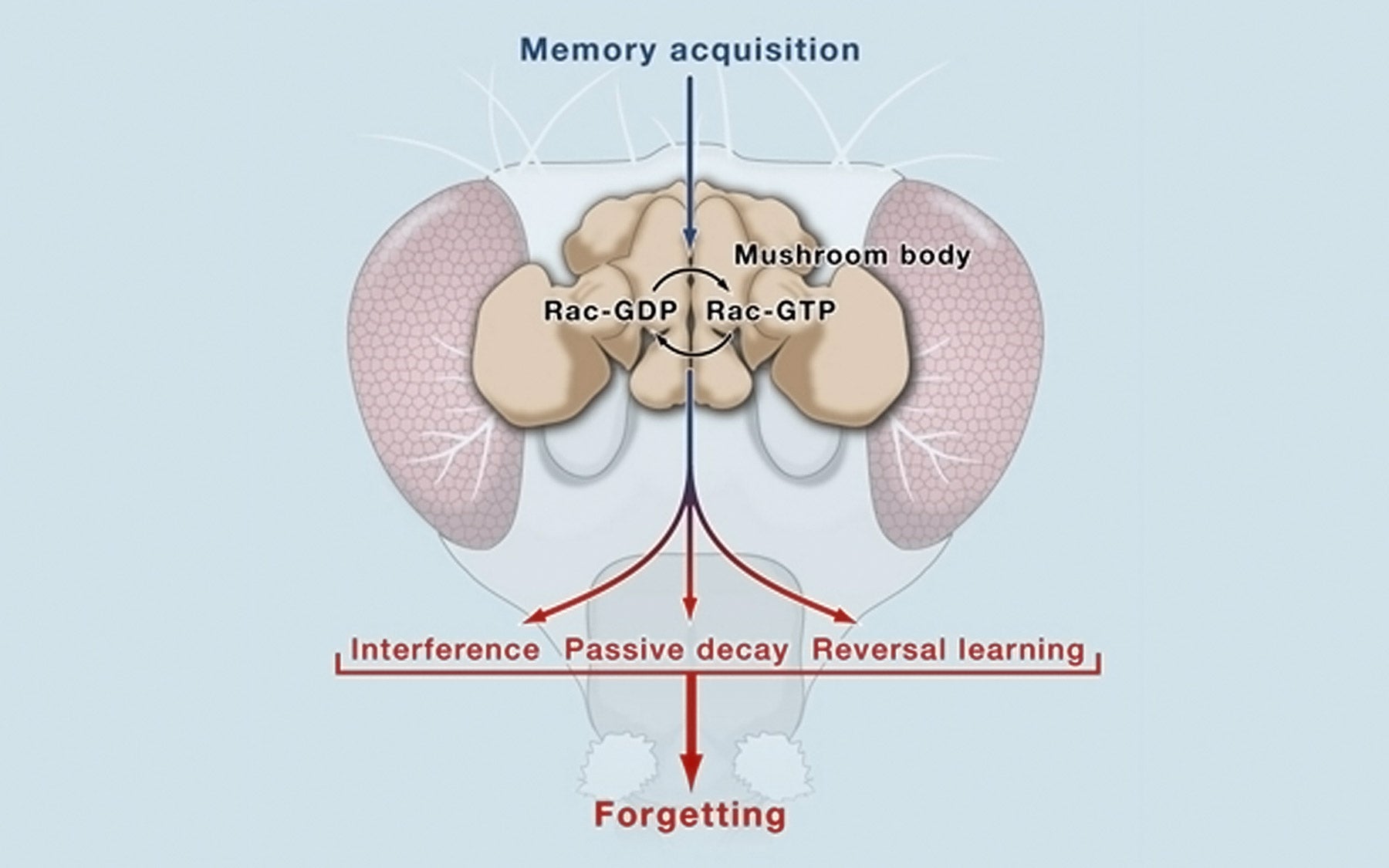Fruit fly experiments show inhibiting and elevating Rac activity slows and speeds erasure
Cold Spring Harbor, NY — Memories that we have just acquired—a new phone number, or the name of a new acquaintance—are more liable to be forgotten than memories we have held for some time. We know this from experience, but we are just learning about events inside and between nerve cells that account for the loss of short-term memory.
Now, a neuroscience team led by a scientist at Cold Spring Harbor Laboratory (CSHL) has discovered that three kinds of forgetting—all involving the erasure of short-term memory—are regulated within neurons by the activity of a protein called Rac. The results will be published online ahead of print February 19 in the journal Cell.
Naturally occurring Rac activation within neurons located in a fruit fly organ called the mushroom body was linked experimentally with three distinct memory-erasure tasks by CSHL Professor Yi Zhong, Ph.D., and colleagues at Tsinghua University in Beijing. One kind of erasure is associated with gradual short-term memory loss (previously considered “passive”); another entails an acute, rapid removal of short-term memory (e.g., “reversal learning”); a third involves a kind of erasure associated with new information that interferes with an existing short-term memory (“interference”).
In all three kinds of erasure, the team has found, the process of forgetting is mediated by a mechanism dependent upon the activity level of Rac, a protein that belongs to the Rho family of GTPases. These are a type of protein known to act, among other things, as regulators of the cytoskeleton, the superstructure of cells. Importantly, Zhong and colleagues propose that Rac’s role in erasing memory is directly related to its function as a cytoskeleton remodeling agent.
In genetically modified flies, the team elevated Rac activity in mushroom body neurons, which are the seat of olfactory-based memories in the fly. Elevated Rac activity had the effect of accelerating the decay of short-term memories. The process worked in the other direction, too. By inhibiting the activity of Rac they observed that short-term memories decayed more slowly than normal, lasting more than a full day rather than vanishing within three hours, as they do, on average, when Rac is not blocked.
The scientists reported that the Rac-dependent forgetting mechanism in flies did not affect mechanisms involved in the formation of new memories, specifically a pathway associated with the gene Rutabaga that is mediated by the enzyme adenylyl cyclase.
“The molecular basis of short-term memory really has been overlooked by the neuroscience community,” says Zhong, a CSHL professor. “It has been widely assumed that such memory is degraded through passive cellular processes. Our experiments challenge the notion by providing evidence of a dedicated mechanism for removing several kinds of short-term memories.”
The active forgetting mechanism that Zhong and colleagues have uncovered has potentially adaptive benefits for an organism, they speculate. “The Rac-mediated mechanism makes possible a forgetting strategy that can respond to environmental information,” Zhong explains. “For instance, it could be advantageous to forget a memory in disuse that is no longer of biological significance, or a memory inconsistent with current circumstances.”
Written by: Communications Department | publicaffairs@cshl.edu | 516-367-8455
Citation
“Forgetting Is Regulated through Rac Activity in Drosophila” appears online ahead of print in Cell February 19. The authors are: Yichun Shuai, Binyan Lu, Ying Hu, Lianzhang Wang, Kan Sun and Yi Zhong. The paper is available online at: DOI 10.1016/j.cell.2009.12.044
